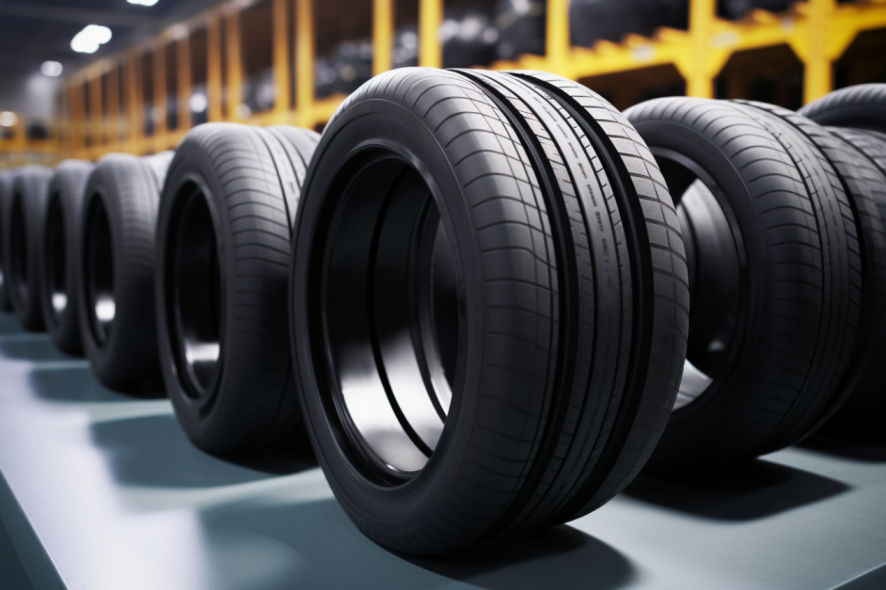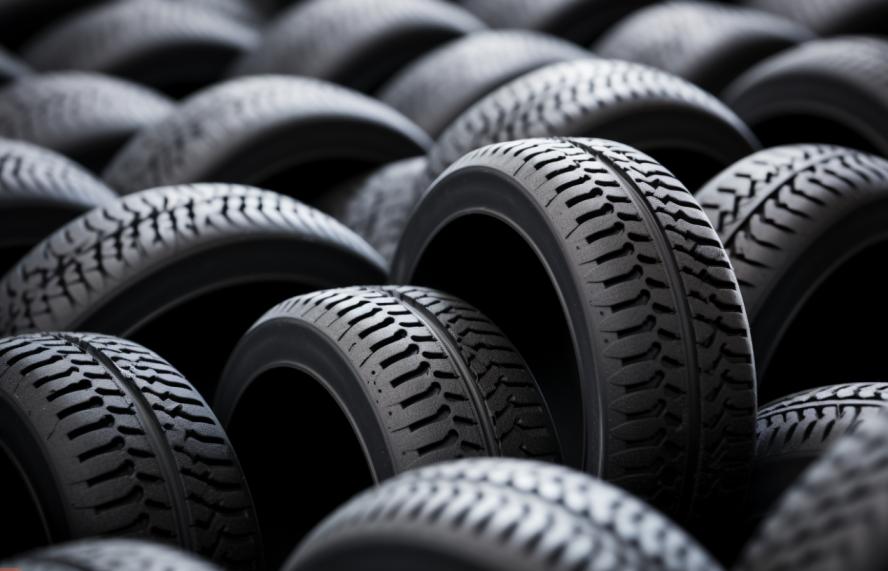ZDC Accelerator in Rubber Compounds: Why Choose
20/08/2024
Do you know about What is ZDC Accelerator Rubber? ZDC accelerator rubber incorporates Zinc Diethyldithiocarbamate (ZDC) as an accelerator, which refers to a type of rubber compound. A critical chemical process that transforms rubber into a more durable material, which like accelerators are chemicals essential for speeding up the vulcanization process in the rubber industry. Creating cross-links between individual polymer chains during the transformation enhances the rubber’s physical properties and durability. As a leading ZDC Accelerator Rubber supplier, CHEMBROAD has professional knowledge and the best services. If you have any questions, please feel free to contact CHEMBROAD with Free Quote & Easy Order Process.

ZDC, known for its ultra-accelerating properties, is particularly effective in both natural and synthetic rubber compounds. It is often utilized in combination with other accelerators to achieve optimal curing times and to improve the overall performance characteristics of the rubber. This unique capability makes ZDC an invaluable component in the production of high-quality rubber products.
The Function of ZDC Accelerator
Accelerating Vulcanization
The primary function of ZDC as an accelerator is to hasten the vulcanization process. Vulcanization is a chemical process that involves heating rubber with sulfur to create cross-links between polymer chains. This process significantly improves the rubber’s elasticity, strength, and durability. By adding ZDC, the vulcanization process becomes much faster, which is essential for industrial efficiency.
Enhancing Rubber Properties
ZDC not only accelerates the vulcanization process but also enhances the physical properties of the rubber. Compounds that use ZDC typically exhibit superior tensile strength, meaning they can withstand greater stress before breaking. They also show better elongation properties, allowing them to stretch more without losing their structural integrity. Additionally, ZDC-accelerated rubber demonstrates increased resilience, meaning it can return to its original shape after being deformed.
Synergy with Other Accelerators
ZDC is often used in combination with other accelerators to achieve the best results. This synergistic effect can optimize curing times and improve the overall balance of properties in the final rubber product. By carefully selecting and combining accelerators, manufacturers can tailor the curing process to meet specific requirements, enhancing both efficiency and product quality.
Properties of ZDC-Accelerated Rubber Compounds
Tensile Strength and Elongation
Rubber compounds accelerated with ZDC are known for their impressive tensile strength and elongation properties. Tensile strength refers to the maximum stress that a material can withstand while being stretched or pulled before breaking. Elongation, on the other hand, measures how much the rubber can stretch before it breaks. The combination of high tensile strength and elongation makes ZDC-accelerated rubber suitable for applications requiring both durability and flexibility.
Resilience and Aging Resistance
Another significant property of ZDC-accelerated rubber is its resilience. Resilience is the ability of the rubber to absorb energy and return to its original shape after deformation. This property is crucial for applications where the rubber is subjected to repeated stress and strain. Additionally, ZDC-accelerated rubber compounds exhibit excellent aging resistance, meaning they maintain their properties over time, even when exposed to harsh environmental conditions.
Low Compression Set
Compression set is a measure of the rubber’s ability to return to its original thickness after prolonged compressive stress. A low compression set indicates that the rubber can maintain its shape and functionality over time, even under constant pressure. ZDC-accelerated rubber compounds generally exhibit a low compression set, making them ideal for applications where maintaining shape and performance under compression is critical.
Applications of ZDC Accelerator Rubber
Tire Manufacturing
One of the primary applications of ZDC accelerator rubber is in tire manufacturing. Tires require a rubber compound that is not only durable and resilient but also capable of withstanding various stresses and strains encountered during driving. The enhanced tensile strength, elongation, and aging resistance provided by ZDC make it an excellent choice for tire production, ensuring longevity and performance.
Industrial Rubber Goods
ZDC-accelerated rubber is widely used in the production of various industrial rubber goods. This includes hoses, belts, seals, and gaskets, all of which require materials that can endure harsh working conditions. The resilience and low compression set of ZDC-accelerated rubber ensures that these products maintain their integrity and functionality over extended periods, even under strenuous conditions.

Automotive and Aerospace Applications
The automotive and aerospace industries also benefit significantly from ZDC-accelerated rubber compounds. These sectors demand materials that offer high performance, reliability, and durability. ZDC-accelerated rubber meets these requirements, making it suitable for various components such as engine mounts, bushings, and seals. The material’s excellent aging resistance ensures that it remains effective throughout the lifespan of the vehicle or aircraft.
Safety and Handling of ZDC Accelerator
Proper Handling Procedures
Like many chemical accelerators, ZDC must be handled with care to ensure the safety of workers and the environment. Proper safety measures should be in place, including the use of personal protective equipment (PPE) such as gloves, masks, and protective clothing. It is also essential to handle ZDC in well-ventilated areas to avoid inhalation of dust or fumes, which can be hazardous to health.
Storage and Disposal
Proper storage and disposal of ZDC are crucial to minimize environmental impact and ensure safety. ZDC should be stored in a cool, dry place, away from direct sunlight and sources of ignition. Containers should be tightly sealed to prevent leakage. Disposal of ZDC and its waste products should be conducted according to local regulations and guidelines to avoid contamination of soil and water sources.
Health Precautions
Exposure to ZDC can lead to health issues such as skin sensitization and respiratory problems. Therefore, it is essential to implement stringent health precautions. Workers should undergo regular health check-ups, and any signs of sensitization or allergic reactions should be addressed promptly. Continuous monitoring and adherence to safety protocols can mitigate the health risks associated with ZDC.
Environmental and Health Considerations
Potential Environmental Impact
There are ongoing concerns about the environmental impact of certain rubber accelerators, including ZDC. These chemicals can potentially contaminate soil and water sources if not handled and disposed of properly. The industry is continually researching and developing alternative materials and methods to reduce these environmental risks. Sustainable practices and greener alternatives are being explored to minimize the ecological footprint of rubber production.
Health Risks and Sensitization
Health risks associated with ZDC include potential sensitization and allergic reactions. Prolonged exposure can lead to skin irritation and respiratory issues. To mitigate these risks, manufacturers and workers must adhere to strict safety guidelines and use appropriate protective equipment. Ongoing research aims to develop safer alternatives that reduce the health hazards associated with rubber accelerators.
Research and Development of Alternatives
In response to the environmental and health concerns, there is significant ongoing research into alternative accelerators and rubber processing methods. The goal is to find compounds that offer similar or superior performance characteristics while posing fewer risks to human health and the environment. Innovations in this field hold promise for a more sustainable and safer rubber industry.
Future Trends
The Role of ZDC in Rubber Manufacturing
ZDC accelerator rubber plays a crucial role in the rubber manufacturing industry, offering significant benefits in terms of curing efficiency and enhanced material properties. Its ability to accelerate the vulcanization process and improve the physical characteristics of rubber makes it indispensable in various applications, from tire manufacturing to industrial rubber goods.

Balancing Performance and Safety
While ZDC provides numerous advantages, it is essential to balance these benefits with safety and environmental considerations. Proper handling, storage, and disposal procedures are critical to minimizing health risks and environmental impact. Continuous research into safer alternatives and sustainable practices is vital for the future of the rubber industry.
The Future of Rubber Accelerators
The future of rubber accelerators lies in developing innovative materials and methods that enhance performance while reducing health and environmental risks. Companies like CHEMBROAD, a leading ZDC accelerator supplier, are at the forefront of this research, driving the industry towards safer and more sustainable solutions. As technology advances, the rubber industry will continue to evolve, offering improved products and processes that meet the demands of modern applications.
Conclusion
By understanding the intricacies of ZDC accelerator rubber, manufacturers can make informed decisions that enhance product quality, ensure safety, and contribute to a more sustainable industry. The balance between performance, safety, and environmental responsibility will define the future of rubber manufacturing, paving the way for innovations that benefit both industry and society.




